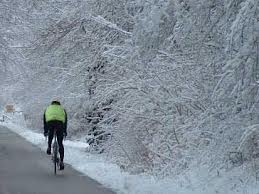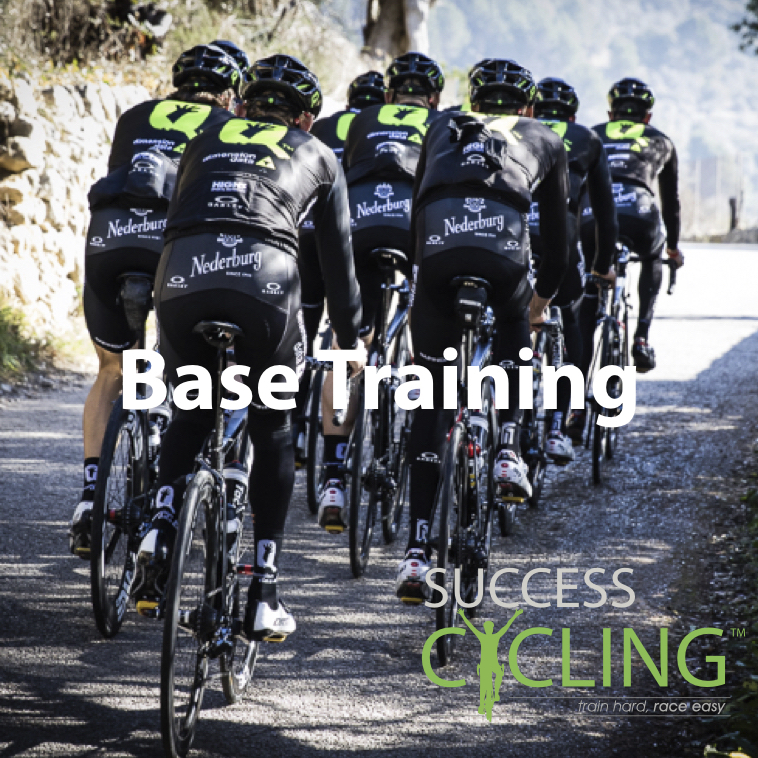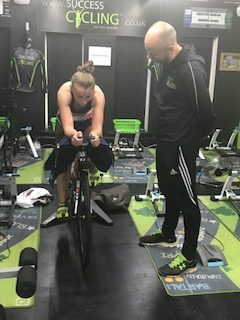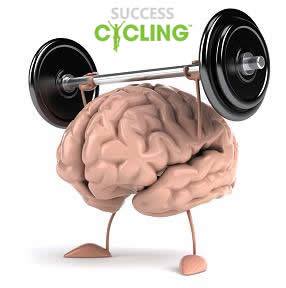Winter Cycling Care

Winter Care
With modern clothing, equipment and some forethought, you can ride happily through the winter and you’ll emerge next spring feeling a fitter, stronger rider. It’s all about attitude. Bad weather should be seen as a reason to get on your bike – negotiating your way through rain and mud will help you learn new skills, improve your balance and push your riding to a new level. Who needs sunshine?
Here are some inspirational tips to help you embrace the cold and love winter riding…
Turbo-Boost
Using a turbo trainer is a safe and effective option for interval work. Make sure your set-up is right and conducive to training. Good ventilation and a fan are advisable along with a sweat catcher to protect your bike and a turbo-specific rear tyre. Choose sessions that suit the turbo: long, steady sessions are always going to be a struggle, even with the distraction of a good turbo training DVD, but short and hard intense interval workouts are ideal. Music can be a great motivator so make sure you listen to up-tempo tracks to improve your experience. It is also good if you can have a separate bike set up on your turbo trainer ready to go at all times.
Delicious Fuel
Eating well through winter plays a major role in maintaining health and fighting off colds and flu. Many riders worry about weight gain during winter, but being too lean can be counterproductive, and slightly more body fat will make you less prone to the cold.
- To help the immune system boost its prevention power during the winter months, you’ll need a wide variety of fruits and vegetables, at least six servings per day to provide the essential bioflavonoids and antioxidants. Foods such as berries, oranges, spinach, carrots, sweet potatoes, garlic, watercress, sprouts, brown rice and a variety of nuts and seeds, particularly sunflower seeds and brazil nuts, can supply the synergistic range of nutrients needed. A cup or two of fresh ginger or green tea a day can also help keep colds and flu at bay.
- After a long ride, a balanced blend of carbohydrates and protein taken within 15 minutes of completing your ride kick-starts recovery. The carbs help replenish muscle energy and proteins are used for muscle repair and growth. There are many recovery products on the market but a simple milk and banana smoothie will do the job – just have it made up ready to drink.
Go Faster
Regular tempo level sessions will increase your ability to ride at a hard level for sustained periods: to ride climbs faster, bridge the gaps to groups and put in stronger turns on the front. Tempo level efforts can also easily be included in your commute. A tempo ride is completed just below your ‘threshold’ and is designed to tax your aerobic system for a sustained period.
An example session would be to warm up, ride 20 minutes at tempo and then cool down. The 20-minute period should be done at an intensity just below the maximum you can sustain for that period.
If you have a power function on your turbo, ride flat out for 20 minutes and check the average power you achieve. As a guideline, your tempo rides should be completed at 90-95% of that average.
You can use heart rate (check your average heart rate for the maximal 20-minute test and then ride 2-3 beats below) but a more reliable method is ‘perceived effort’ – how hard do you think you can ride for 20 minutes flat out? Ride just below that intensity. It’s critical to flatline your intensity: don’t fluctuate above and below threshold because this will not encourage the physiological developments required.
Ride Strong
If you haven’t built endurance over the summer, winter is a great time to do it. Long and steady training rides – as opposed to hard and fast sprints – will help you build stamina and strength and ride for longer. On long and steady rides, monitoring your effort and sticking to the right intensity requires a high level of discipline. If you’re using a power metre you’ll be riding at 56-75% of FTP (functional threshold power), heart rate will be 69-83% of maximum and, if using perceived effort, leg fatigue should be low and you should be able to maintain a full conversation throughout the ride.
It is essential that you stay at these levels for the whole ride rather than fluctuating up and down. Choose suitable routes without steep climbs, make sure you have low enough gearing and don’t be sucked into racing with your mates. For novice riders a good starting point is 90 minutes, but riders targeting long sportives should build up to 4-6 hours.
Hit the Gym
In the winter, hitting a warm, dry gym can be an appealing alternative to muddy rides and gym workouts are among the most productive off-the-bike activities. Some focused strength work will certainly improve your cycling performance. Pumping iron will also make you more robust and less prone to injury. Cycling makes you strong in a very fixed position, through limited ranges of movement, but if it’s all you do then lifting a box or a child, a spontaneous kick-about or a heavy bout of gardening can all be potential minefields. Weight training will protect you from injury and strain. Two or three sessions a week during the winter will build an excellent strength base that can be maintained with just one weekly session. Use fairly heavy weights in 6-10 reps and include the following; lunges, single arm rows, dumbbell chest press, deadlift and plank.
Layer Up
A moisture-wicking baselayer that keeps the body dry is crucial. Wear an extra thin layer rather than one that’s too thick. A thermal layer worn over your baselayer will keep the warmth in, but should work with the base and shell to let sweat vapour out. Softshell and waterproof jackets should provide wind stopping coverage to the chest, stomach and groin – core areas you need to keep warm.
Extremities – Look after them: a fleece beanie that covers your ears; windproof gloves; and two pairs of socks or outer protection overshoes.
Winterproof your Bike
- To stop the inside of your frame corroding use Frame Saver, 30wt oil or thick chain lube with some WD40 added. Remove cranks, BB and wheels, then spray Frame Saver into tubes. Plug the BB and seat-tube with paper and gently move bike to distribute evenly.
- Seal the vent holes with matchsticks dipped in superglue and poked in the hole. Follow up with a dab of enamel or touch-up paint and put greased bolts in any spare eyelets. Clean the bike then coat it with a generous layer of car wax and buff.
- Mudguards are an important winter accessory. Check for clearances: if necessary, a small cutaway will help clear the brakes, and P-clips can be used instead of eyelets. Mudflaps will keep your feet drier and are a courtesy to riders behind you.
- To help prevent punctures, install slime-filled tubes, protective strips or Kevlar belted tyres. Remove your wheels, tyres and old tubes, inspect rim strips for wear and ensure they cover the spoke holes. Check your tyres regularly for thorns or glass.
- Fit a sealed outer cable ferrule to your rear derailleur to help keep your shifting smooth. Remove the cable and outer from the rear meche, slide off the rubber seal on the cable and fit the new ferrule.
- Stainless steel cables, chains, fasteners and bearings can help keep your bike rust-free. Stainless steel fasteners are available in 4, 5 and 6mm thread sizes in standard or Allen versions, along with washers and Nyloc nuts. Add a dab of oil to reduce friction.
Leave a Comment cancel
This site uses Akismet to reduce spam. Learn how your comment data is processed.






